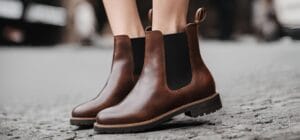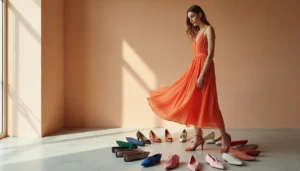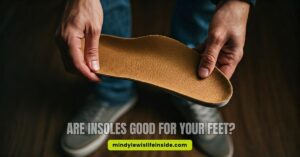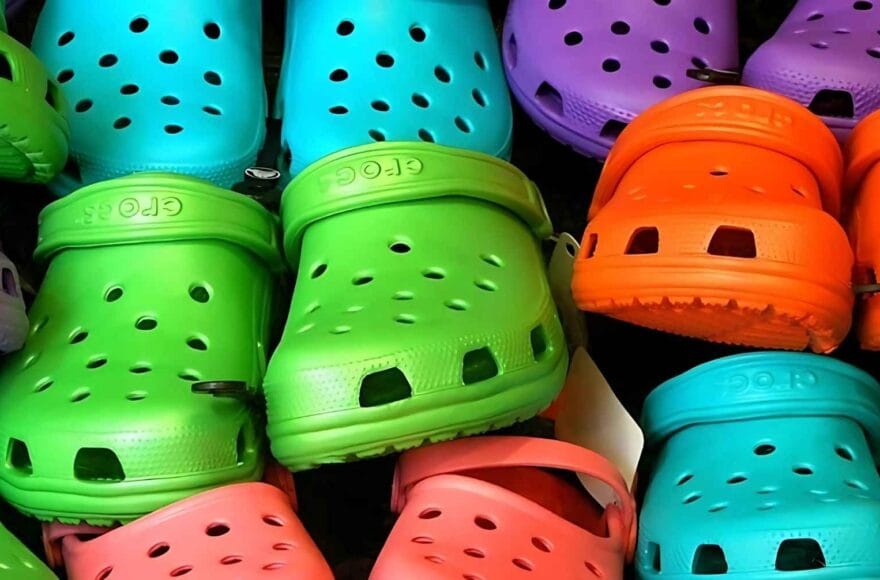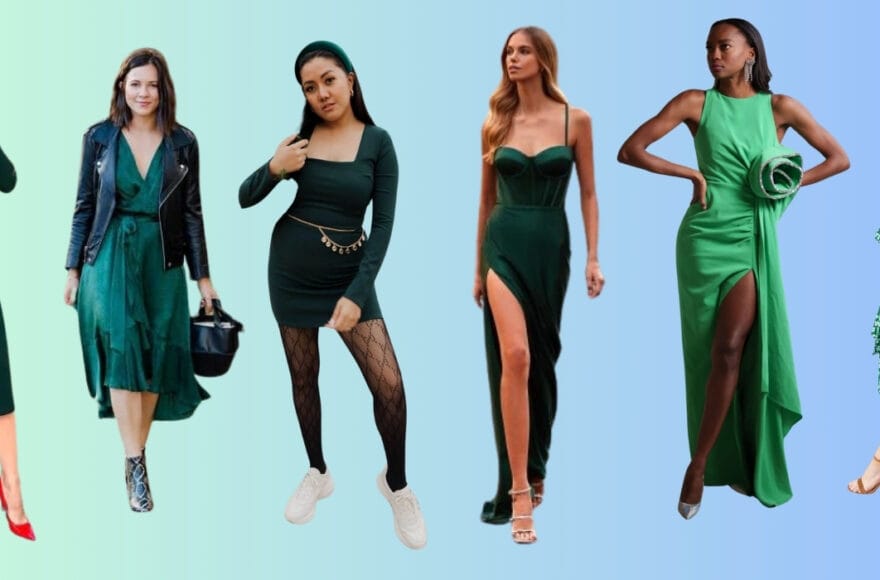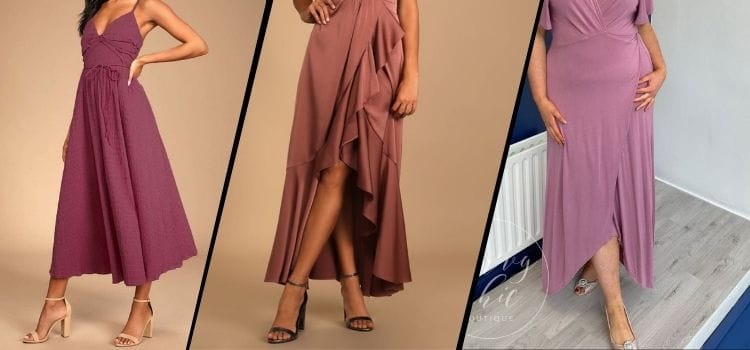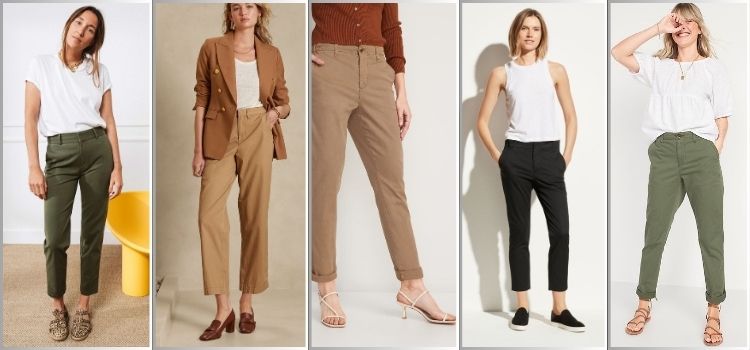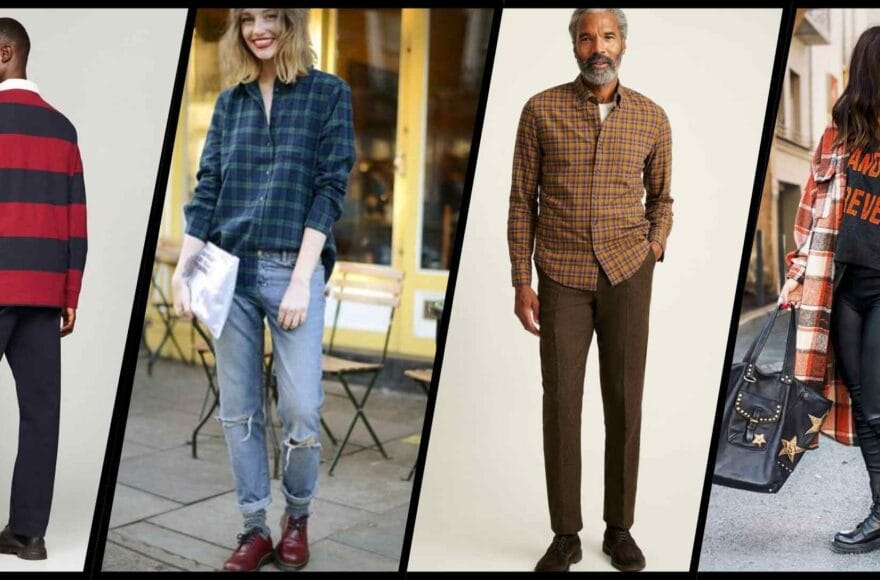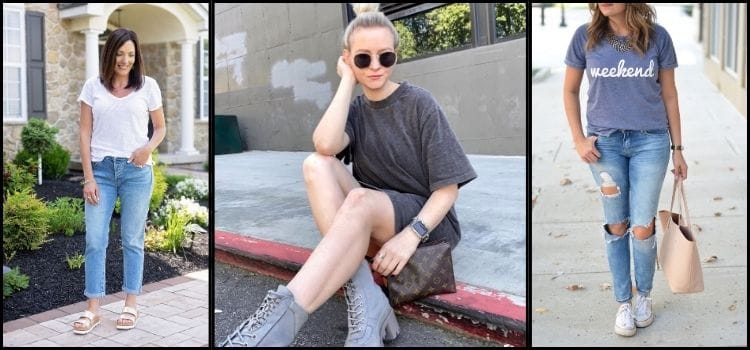Can You Wear Heels to Court? Essential Guide
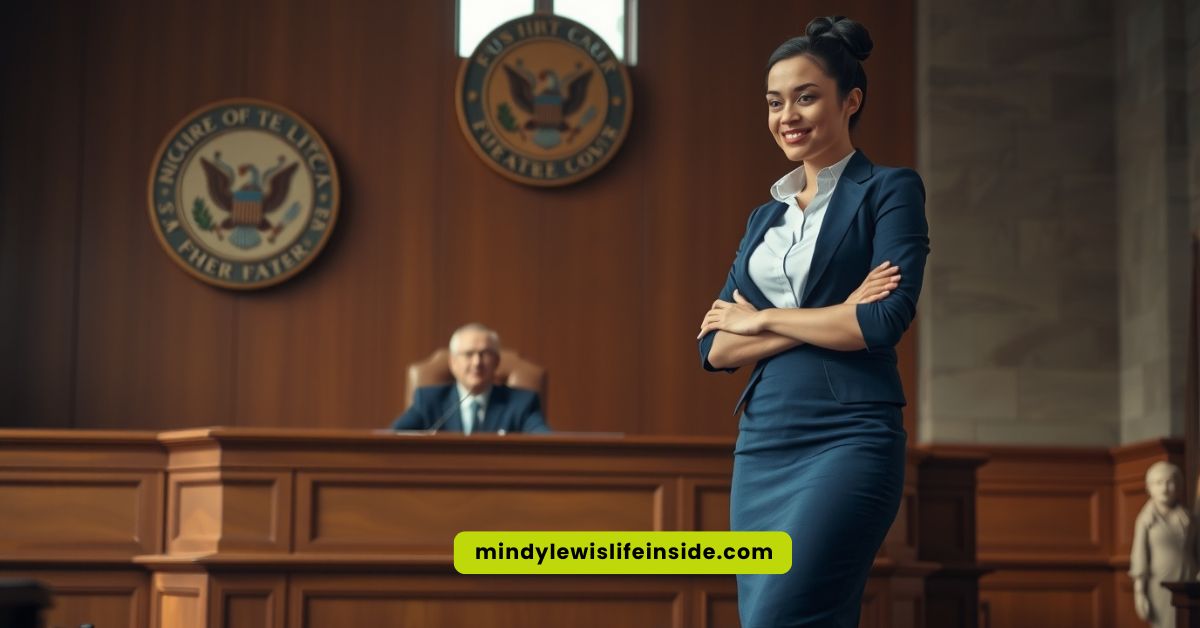
As an Amazon Associate, I earn from qualifying purchases
Stepping into a courtroom can be stressful. But there is one thing you can control—how you look. Dressing the right way for legal proceedings helps you make a good courtroom appearance. It also shows that you have respect for the judicial process and court system. Wearing proper courtroom attire isn’t just about rules.
It also shows your professionalism and that you care about your case. It does not matter if you are a litigant, a witness, or an attorney.
Knowing what to wear is an important step to give a good impression. Now, you may wonder if you can wear heels to court. Let’s talk about that.
Understanding Courtroom Attire Expectations in the U.S.
Courtrooms in the U.S. have had formal dress codes for many years. This helps keep up good courtroom etiquette. Judges, attorneys, witnesses, and anyone joining legal proceedings are expected to wear professional attire. The courtroom dress code is not only about old traditions. It shows respect for the judicial process and that people take their personal responsibility seriously.
Wearing the right attire can also have a big effect on your credibility. The way you dress, from business suits to simple dresses, helps others decide if you look professional. How you appear in proceedings can change what people think about you.
This is supported by legal fashion guides and courtroom etiquette advice from sources like Cohen & Jaffe LLP and LegalZoom, which emphasize that attire should never detract from the gravity of court proceedings. Next, we will talk about why first impressions in court matter so much.
Importance of First Impressions in Court
First impressions matter a lot in legal proceedings, especially in litigation. When you walk into the courtroom, what you wear shows how much you respect the court system and its decorum. Dressing in professional attire is a good way to give a positive impression. It shows you take the legal process seriously.
How you look at court shapes what the judge, jury, and other lawyers think. If you wear neutral colors, like navy blue, and keep your grooming, including your mustache, neat, there are fewer distractions. This helps everyone pay attention to the case and not your personal style. Wearing navy or other calm colors is seen as a sign of respect and professionalism.
Also, following courtroom etiquette is important to show a serious attitude toward the legal process. It does not matter if you have a big case, like a personal injury claim, or another kind of case; the nature of the case will guide your wardrobe choices. Looking professional and dignified can go a long way in creating positive opinions about you. The way you dress and act in court can impact your case. Next, let’s talk about what is right for a court appearance.
Overview of Standard Dress Codes for Court Appearances
Standard dress codes are vital for making a confident courtroom appearance. Business attire such as suits, modest skirts, sports coats, and dress shirts often tops the list of appropriate choices. Here’s a text table to guide you:
| Dress Code Element | Details |
|---|---|
| Outfit Choices | Business suits, tailored pantsuits, knee-length dresses, or modest skirts |
| Preferred Colors | Neutral tones like navy blue, grey, or beige, and simple pinstripes |
| Footwear | Closed-toe court shoes, dress flats, or low heels |
| Grooming Standards | Neatly styled hair, minimal makeup, and well-trimmed nails |
| Accessories | Sophisticated jewelry like stud earrings or watches |
Conservative choices align with the decorum of the court, helping you create a polished and confident appearance. These recommendations are echoed by legal professionals and fashion experts, who stress that well-fitted clothes and minimal accessories are key to a professional look. Let’s explore how footwear ties into this dress code next.
The Role of Footwear in Courtroom Dress Codes
Footwear is often left out, but it is important in courtroom attire. Picking the right shoes is a way to show respect for courtroom etiquette. It also helps to keep a professional appearance. People often wear dress shoes, closed-toe heels, or loafers. These shoes help show style and do not take away focus from the case.
Good footwear can help you stay comfortable during long proceedings. Shoes that are loud, flashy, or casual like sandals or sneakers, can break the decorum of the courtroom. If you make smart choices about your footwear, you can give a positive impression to the people there. This is supported by multiple legal fashion guides and courtroom etiquette advice, which consistently recommend closed-toe, conservative shoes for court. You might wonder, why does footwear matter for court? Let’s find out.
Why Footwear Choice Matters for Court
Footwear is very important in legal proceedings. What you put on your feet makes a difference in the court. It helps with comfort and shows professionalism. The shoes that you wear can change how people see you during the proceedings.
Comfort should come first because court meetings can last a long time. Pick closed-toe shoes or moderate heels. These will help you stay steady and pay attention in court. Also, wearing the right footwear shows that you notice every detail. This is a sign of respect for courtroom etiquette and decorum.
Professional attire should include your shoes. Your shoes can show your personal style, but they should not take attention away from your case. Do not wear sneakers, sandals, or shoes that are too trendy. Doing so might hurt your positive impression. Picking classic shoes that match dress codes tells others you care about the seriousness of the trial. The next part will cover common rules about shoes in U.S. courts.
Common Footwear Guidelines in U.S. Courts
Maintaining the right courtroom dress code for your shoes is important. Here are some simple guidelines you will see in many U.S. courts, as recommended by legal professionals and fashion experts:
- Choose neutral-toned shoes like black or brown because they give a professional look.
- Avoid open-toe styles like sandals, flip-flops, or stilettos.
- Stick to quiet and understated footwear so you don’t stand out with flashy or loud shoe designs.
- Wear closed-toe pumps or loafers to stay comfortable and make sure they fit the courtroom dress code.
- Ensure shoes are clean and polished to show you take care of your appearance.
These shoe guidelines are part of good courtroom etiquette. They help show respect for the court and the legal process. If you are wondering if heels are allowed in court, we will talk about that below.
Are Heels Allowed in Court?
Yes, wearing heels in court is fine, but you should pick the right pair. According to expert-backed guidance from law firms and legal fashion blogs, heels should be conservative, closed-toe, and moderately styled—think classic pumps rather than flashy stilettos. Moderate heels are best because they look professional and feel more comfortable. They fit with how people are expected to dress in court. Very high heels or shoes that are too bright or flashy can hurt your courtroom appearance and make you look less serious.
Try to choose heels that go well with your business attire. Neutral-colored pumps or low heels work best if you want to make a positive impression without standing out too much. Knowing how to pick the right heels for court shows that you respect the legal process and care about the rules and decorum of the courtroom. This helps show your professionalism, which is important in this setting.
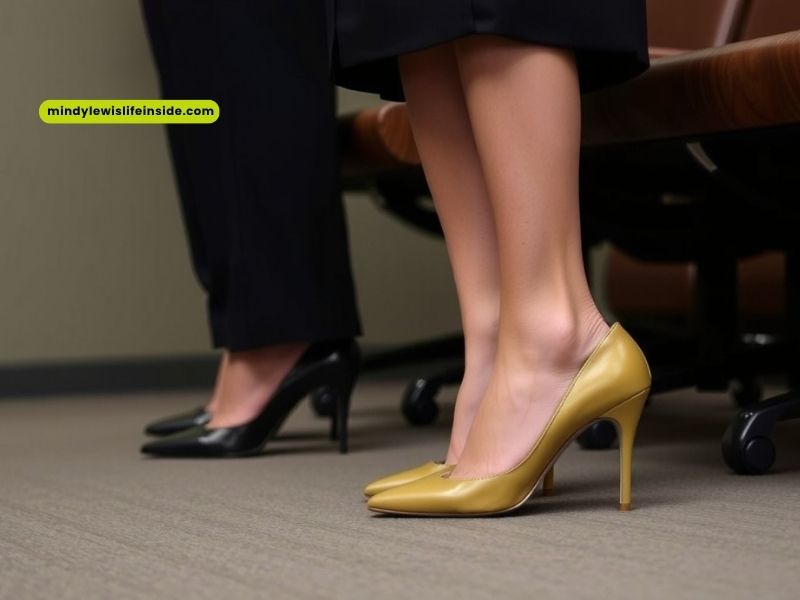
Typical Rules Regarding Heels in the Courtroom
The courtroom dress code usually lets you wear high heels, as long as you keep it modest and professional. Heels over three inches can feel tough if you are at court for a long time. Moderate heels are a better choice and make the right impression.
Business suits should go well with plain and simple footwear. Neutral-colored pumps or low classic heels are good because they fit with the court system’s rules. You should not wear shoes with bright decorations or anything too flashy, as that could take away from your seriousness or distract others.
For your court appearance, choose smart shoes that work well with your professional attire. Judges and juries often notice if your outfit shows that you respect the court and follow courtroom etiquette. Picking moderate heels for court helps you look and feel more at ease with the process. Also, the height of your high heels can say a lot about you. Let’s see how that affects what people think of you next.
How Heel Height Can Affect Perception and Comfort
Heel height can be a big factor in your comfort and in how people see your courtroom appearance. If you go with moderate heels that are about one to two inches, you are likely to have more confidence and still keep your stability and professionalism.
Choosing high heels that are too tall can look flashy or make you seem impractical. That can take focus off your case. Smaller heels or closed-toe loafers often match well with what the court expects. They show you understand both the need for usefulness and the decorum of the judicial process.
It is also very important to think about comfort. When you walk in moderate heels without pain, you can look confident and create a positive impression. That helps you put your energy into your case and presentation. The way you dress and what shoes you wear matter a lot in court. They show the level of respect you have for the legal system. Now, let’s go over some best practices when choosing heels for legal settings.
Best Practices for Wearing Heels to Court
Wearing heels to court means you have to think about what you wear so you follow courtroom etiquette and dress in professional attire. Choose moderate heels that are not too high. Go for neutral colors, and do not pick heels with too trendy designs. Maintain comfort and balance your focus, since you may have to be on your feet for a long time during the proceedings.
Wear your heels with outfits that are tailored, like trousers or conservative dresses. Your footwear should help you leave a positive impression. It is important to make sure your attire fits in with the formal setting. These best practices are echoed by legal professionals and fashion experts, who recommend testing your court shoes ahead of time for comfort and even bringing flats to the courthouse to switch before entering the courtroom. The next part will show you how to pick the best heel styles and heights for your time in court.
Choosing the Appropriate Heel Style and Height
Choosing the right heels for court is about finding the middle ground between style and comfort. You can follow these tips:
- Opt for moderate heels: Choose heels that are one to two inches high for good balance. Block heels or classic pumps are especially popular for their comfort and stability, as noted in legal community forums and fashion guides.
- Neutral colors shine: Navy blue, beige, and black go well with professional attire.
- Go for classic dress shoes: Closed-toe pumps or loafers are great for comfort and proper decorum.
- Avoid flashy styles: Do not pick bright colors or shoes with too many decorations.
When you wear classic dress shoes with tailored pantsuits or knee-length skirts, you create a polished and respectful courtroom appearance. Try not to choose style over comfort—shoes that show both professionalism and stability will help you get through all court proceedings. Next, we will look at ways to help keep the comfort and stability you need.
Ensuring Comfort and Stability During Long Proceedings
Going to court can mean sitting or walking for a long time. That is why you need to wear shoes that feel good and are also stable. Moderate heels, closed-toe pumps, and loafers are all good options. They help you look sharp and make it easy to move around during the day.
Look for shoes with soft insoles or good arch support. This will help keep your feet from hurting. Shoes that help you stay steady can cut down on distractions. That way, you can keep your mind on your case and on courtroom decorum. Stay away from high heels or shoes that do not fit well. Those can make you uncomfortable or hurt how you look.
At the end of the day, it’s about finding a mix of comfort, respect, and professionalism. This means you can keep your focus on the legal process, not on your footwear. Some people even bring flats for walking around the courthouse and switch to heels before entering the courtroom, a tip often shared by legal professionals and on forums like Reddit’s r/LawSchool. Now, let’s take a look at some good choices for women who do not want to wear heels.
Alternatives to Heels: Other Suitable Footwear Options
While you can wear heels as part of your court attire, you also have other good options for shoes. Flats and dress shoes work well in court. These can help you keep up professionalism and follow courtroom etiquette. These choices are great for people who care about comfort or may have medical reasons that make heels hard to wear.
Pick shoes that go well with conservative dresses, skirts, or pantsuits. You can choose flats in neutral colors or loafers, but closed-toe shoes are a must to meet the dress code. Even if you do not wear heels, you can have a neat and professional appearance. Next, let’s look at why flats and low-heeled shoes are good for court dress shoes.
Classic Flats and Low-Heeled Shoes
Classic flats and low-heeled shoes are good choices for courtroom attire. These shoes are practical for a day in court and still look sharp. Flats give you comfort and style, so they are great if you know the proceedings might be long or if you do not want to wear heels because of your personal style.
Low-heeled shoes, like one-inch loafers, are also a smart pick. They let you move around in court with no trouble and look professional. Neutral colors, such as black or beige, fit with courtroom etiquette and match most outfits. You can wear these shoes with tailored pantsuits or knee-length dresses for a smart and clean look.
These types of footwear are great for people who want courtroom attire that does not include high heels but still fits the rules for court. You can look good, feel good, and show professionalism. So, what about open-toe shoes? Let’s talk about those next.
Closed-Toe vs. Open-Toe Shoes in Court
When you think about shoes to wear in court, closed-toe ones are the most recommended. They show that you have professionalism and respect the decorum of the court system. Classic choices are pumps, dress flats, and loafers.
Open-toe footwear, like sandals or tall high heels, can take away from the seriousness of your court appearance. Closed-toe shoes help you look neat and put together. They fit well with the usual business attire and the court’s dress code.
Choosing shoes that are simple and modest, along with a simple necklace, is important in the courtroom dress code. No matter if you are a defendant, a witness, or an attorney, the way you dress makes a difference in the judicial process. Good attire can help people have better interactions when they are in court.
Common Mistakes to Avoid with Courtroom Footwear
Simple mistakes with your footwear can take away from your professional appearance during court proceedings. Shoes that make noise, like those with squeaky soles, can distract people and break the focus in such a formal setting. Wearing sneakers or sandals in court is also a problem. These shoes do not follow the dress code and go against courtroom etiquette.
To avoid these mistakes, go with dress shoes or classic flats. Pick clean, simple, and respectful footwear that matches the decorum of the court. This helps your courtroom appearance meet what people expect. We will now talk more about noisy or inappropriate shoes.
Distracting or Noisy Shoes
Noisy shoes can get in the way in court without you meaning to. They may take attention away from the legal matters you have to work on. Shoes that make a lot of noise—like sandals with metal buckles or soles that squeak—are not good for courtroom settings.
Wear clean, soft-soled footwear, like dress shoes, loafers, or moderate heels. These types make it easy to move around quietly and show a sign of respect for courtroom decorum. Shoes with bold designs or strange patterns can also distract others, putting focus where it should not be.
Courtroom etiquette asks you to keep it simple and aim for professionalism. Stay away from flashy footwear. Choose quiet, dress shoes with a neutral color, and you help your courtroom appearance. This keeps the focus on your case, not on your personal style. Now, let’s talk about dress code violations.
Footwear That May Violate Dress Codes
Wearing the wrong type of footwear in court can hurt how people see you in legal proceedings. Flip-flops, bare legs, and open-toe sandals are much too casual for the legal process. The same goes for athletic wear like sneakers. These shoes do not follow courtroom etiquette or show the needed professionalism.
Shoes with really high heels are not a good choice for the courtroom, either. They can distract others or make it hard for you to walk well. Both men and women should also stay away from rugged boots or any shoes with big logos, such as sunglasses or inappropriate casual shoes. Clean, polished footwear is best for the court.
Following the court’s dress code shows you respect the process and your part in it. Being in dress shoes or simple low heels is the right choice. It fits with the decorum and rules of the courtroom. Now we can wrap up and move to the next part.
Conclusion
To sum up, picking what to wear in court, especially your shoes, can feel tricky. The rules about wearing heels can change depending on where you are, so it is important to put comfort and professionalism first.
Think about heel style and how high they are, and make sure your footwear matches what the court expects. What you wear, including your shoes, can change how people see you at your court appearance. First impressions count. Wearing the right shoes also helps you feel more confident in the courtroom during the proceedings.
If you are not sure what to wear or what footwear is best for the court, you can reach out and get advice. Remember, your comfort and professionalism should always be the most important things when picking out your attire.
Frequently Asked Questions
Can I wear open-toe heels to court?
Open-toe shoes, like heels, are not usually a good choice for court. Courtroom etiquette says that people should avoid any footwear that could take the focus away from the legal proceedings. It is better to wear closed-toe shoes or pumps.
These work well with your professional attire and help keep the decorum of the courtroom. This way, you make sure your attire fits in with what is expected during the proceedings. This is supported by legal fashion guides and expert advice from law firms.
Is there a preferred heel height for court appearances?
Yes, it is best to wear moderate heels for court. Try to choose heels with a maximum height of two inches. This helps you stay comfortable and steady during proceedings. Wearing this type of heel shows professionalism. It also fits well with the formal mood in court and does not look distracting or be hard to walk in. Block heels or classic pumps are especially recommended for their comfort and stability.
What if I can’t wear heels due to medical reasons?
If you can’t wear heels because of health reasons, you can go for classic flats or low-heeled dress shoes. When it comes to courtroom attire, looking professional matters. Choose footwear that is comfortable to wear but still looks neat and formal. This will help you show professionalism with your attire.
Are wedges or platform shoes acceptable in court?
Wedges and platforms are usually not the best shoes for court. They look too casual for this kind of place. In court, people like you to wear classic shoes like closed-toe pumps or loafers. This helps everyone keep to the rules and match the serious mood of the courtroom.
Do dress codes differ for witnesses, defendants, or attorneys?
Courtrooms are places where people dress in a formal way. Attorneys usually wear suits that fit well, especially in serious cases such as medical malpractice. This shows that they have authority. Witnesses and defendants are expected to show respect by wearing business attire. The main thing is to pick simple and neat clothing. Your attire should look good no matter what your role is in the courtroom.
As an Amazon Associate, I earn from qualifying purchases
